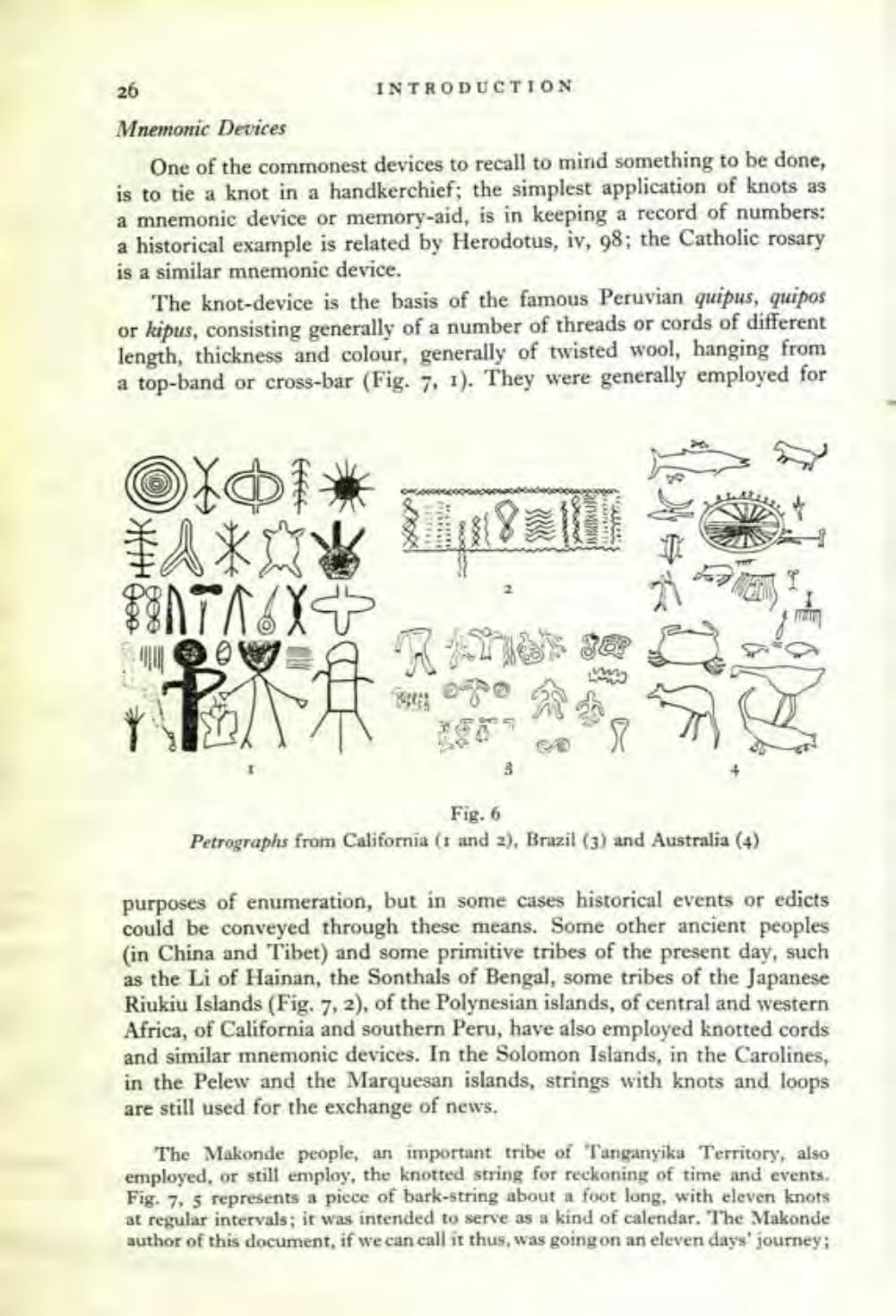________________
26
INTRODUCTION
Mnemonic Devices
One of the commonest devices to recall to mind something to be done, is to tie a knot in a handkerchief; the simplest application of knots as a mnemonic device or memory-aid, is in keeping a record of numbers: a historical example is related by Herodotus, iv, 98; the Catholic rosary is a similar mnemonic device.
The knot-device is the basis of the famous Peruvian quipus, quipos or kipus, consisting generally of a number of threads or cords of different length, thickness and colour, generally of twisted wool, hanging from a top-band or cross-bar (Fig. 7, 1). They were generally employed for
ΟΦ AXI 8817 ^X +
,不是
RADIOS
Bo 186
Fig. 6
Petrographs from California (1 and 2), Brazil (3) and Australia (4)
บ
purposes of enumeration, but in some cases historical events or edicts could be conveyed through these means. Some other ancient peoples (in China and Tibet) and some primitive tribes of the present day, such as the Li of Hainan, the Sonthals of Bengal, some tribes of the Japanese Riukiu Islands (Fig. 7, 2), of the Polynesian islands, of central and western Africa, of California and southern Peru, have also employed knotted cords and similar mnemonic devices. In the Solomon Islands, in the Carolines, in the Pelew and the Marquesan islands, strings with knots and loops are still used for the exchange of news.
The Makonde people, an important tribe of Tanganyika Territory, also employed, or still employ, the knotted string for reckoning of time and events. Fig. 7, 5 represents a piece of bark-string about a foot long, with eleven knots at regular intervals; it was intended to serve as a kind of calendar. The Makonde author of this document, if we can call it thus, was going on an eleven days' journey;




